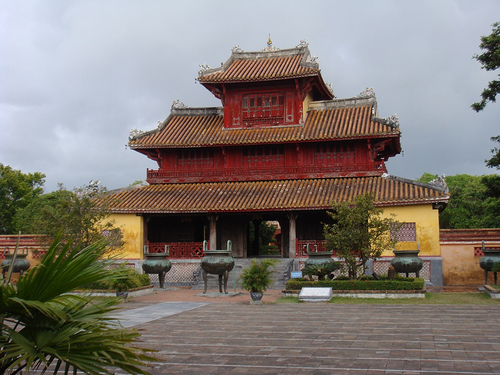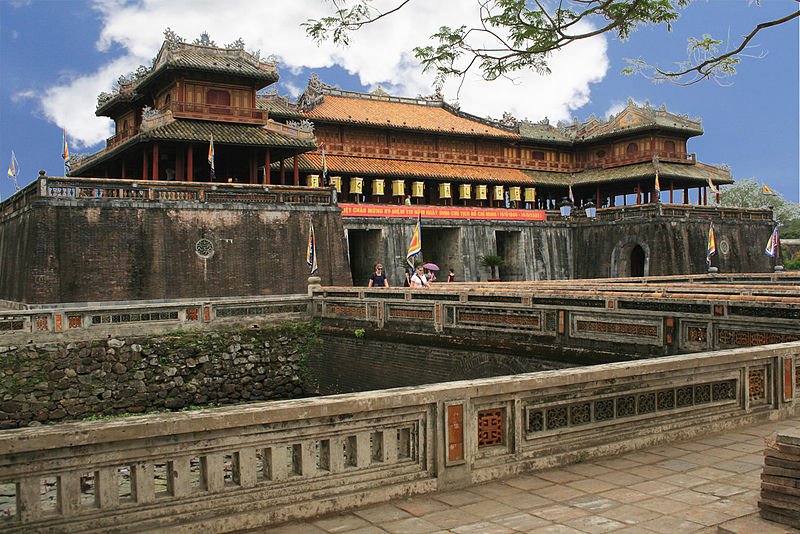Hue is well known for its historic monuments, which have earned it a place in UNESCO's World Heritage Sites. The seat of the Nguyễn emperors was the Imperial City, which occupies a large, walled area on the north side of the Perfume River. Inside the citadel was a forbidden city where only the emperors, concubines, and those close enough to them were granted access; the punishment for trespassing was death. Today, little of the forbidden city remains, though reconstruction efforts are in progress to maintain it as a historic tourist attraction.
Roughly along the Perfume River from Huế lie myriad other monuments, including the tombs of several emperors, including Minh Mạng, Khải Định, and Tự Đức. Also notable is the Thiên Mụ Pagoda, the largest pagoda in Huế and the official symbol of the city.
A number of French-style buildings lie along the south bank of the Perfume River. Among them are Quốc Học High School, the oldest high school in Vietnam, and Hai Ba Trung High School.
The Huế Royal Antiquities Museum on 3 Le Truc Street also maintains a collection of various artifacts from the city.
In addition to the various touristic attractions in Hué itself, the city also offers day-trips to the Demilitarized Zone lying approximately 70 km (43 mi) north, showing various war settings like The Rockpile, Khe Sanh Combat Base or the Vinh Moc tunnels.
The first 11 months of 2012, Huế received 2.4 million visitors, an increase of 24.6% from the same period of 2011. 803,000 of those 2.4 million visitors were foreign guests, an increase of 25.7%.
Although tourism plays a key role in the city’s socioeconomic development, it also has negative impacts on the environment and natural resource base. For example, services associated with tourism, such as travel, the development of infrastructure and its operation, and the production and consumption of goods, are all energy-intensive.
Research by the Climate and Development Knowledge Network has identified traditional ‘garden houses’ as having the potential to increase tourist traffic and revenue. Apart from the environmental, economic and cultural benefits provided by garden houses, their promotion could pave the way for other low carbon development initiatives.











